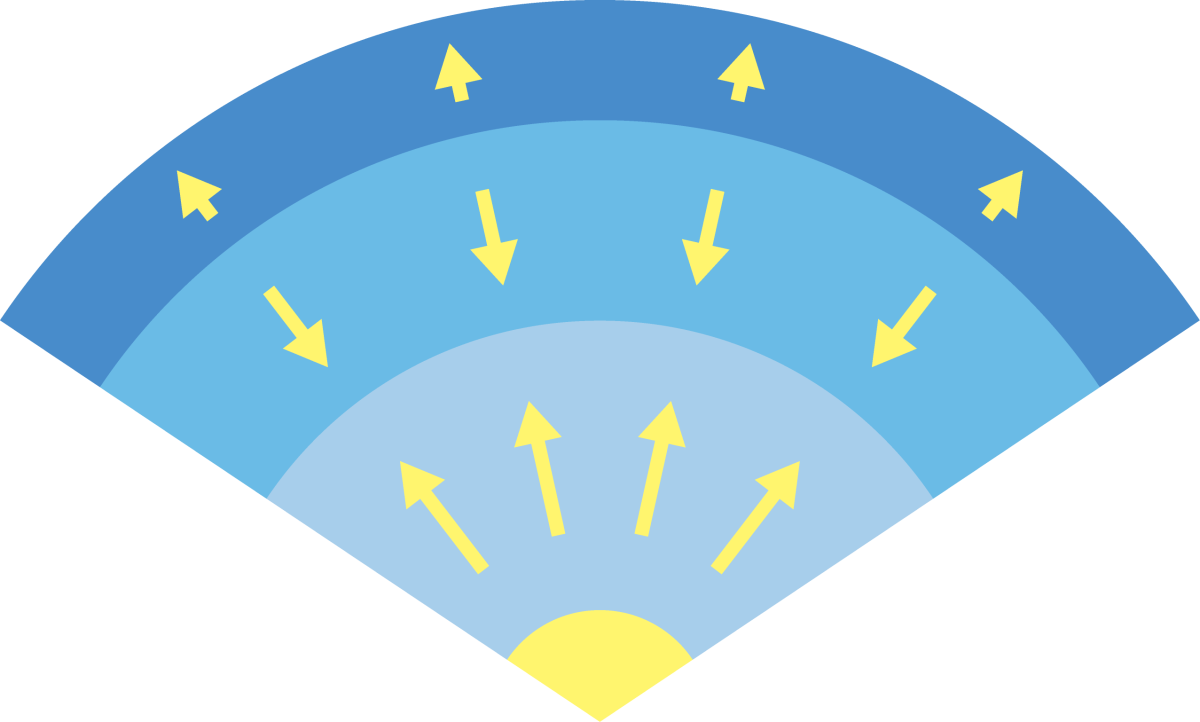Administrator: Dr. Eric Hintz Contact 
Assistant: Gerry Samolyk
Science Advisor: Dr. Kenneth Carrell
Interested in joining this section? Click here for instructions.
Watch the Short Period Pulsator Observing Section Videos
Newsletter
In early 2024, the Short Period Pulsator Section began issuing a newsletter which discusses accessible targets of high scientific interest. Visit the archive page to read the newsletter.
Introduction to Short Period Pulsating Stars (SPP)
Pulsating variable stars are from the group of intrinsic variable stars. In other words their change in brightness is something internal to the star, not light being blocked. In this case, the brightness changes are due to variations in the radius and temperature of the star. The luminosity, or brightness, of the star is related by:
L = 4(pi)R2(sigma)T4
A pulsating star is driven by internal layers that trap energy and cause the star to expand and change temperature. As the star expands the internal conditions change and the trapped energy is released. Now gravity can pulls the layers back down. Then the entire process repeats. That is why these stars are called pulsating stars.
The changes detailed above can take place on time scales of minutes to years, leading to a wide variety of potentially interesting objects. Those targets with the longest periods are covered in the Long Period Variable section. This observing section (SPP) deals with stars that pulsate with periods from minutes to a few weeks. We will try to provide the AAVSO membership with a wide variety of targets that will provide a range of challenges to keep you excited.
Importance of SPP Variables
The question of why should we observe a particular type of variable is common. This is an important question to ask as we try to maximize the observing time we have. In the case of pulsating stars there are a number of important scientific questions can be addressed. Perhaps the most famous here is the period-luminosity relate found from some classes of pulsating stars. This allows them to be used as distance indicators, such as was done by Edwin Hubble with the Cepheid variables in M31. As we refine our understanding of the period-luminosity relation it make slight adjustment in the entire cosmic distance ladder.
While many stars are considered mono-periodic (pulsating with one period) there are also many examples of stars that pulsating with multiple periods, which can generate a very complex light curve. These multi-periodic stars provide a probe of the internal structure of stars that we can get no other way. It provides a comparison to models and helps those who model the internal structures of stars to have a better set of boundary condition. This field of research is called Asteroseismology.
Perhaps one of the most interesting parts of pulsating variable stars is the chance to see stellar evolution happening. We always tell students that we can’t watch a single star evolve through the HR diagram. This is still perfectly true. However, some stars show changes in their period that could be evidence of the star evolving off the main sequence. In fact, there are a lot of changes that occur in the pulsational period of these objects that are still not well understood, and are active research areas.
Those are just a few examples of why you should consider being an active contributor of data to the SPP section. We will try to provide a selection of targets for a wide range of equipment.
Types of Short Period Pulsating Variables
Below is a list of just some of the potential short period pulsating stars that you might consider observing. We are still in the process of updating the other pages of SPP section. Keep coming back to see our updates.
- Cepheid variables (including W Virginis stars)
- RR Lyrae variables
- delta Scuti
- gamma Doradus
- beta Cephei
- slowly pulsating blue variables
- Pulsating white dwarf stars


